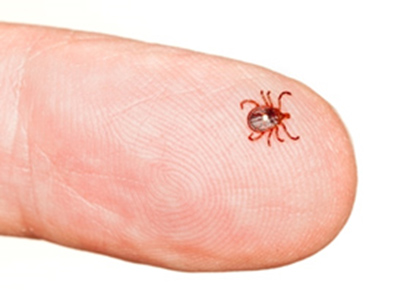Babesia is a little different from Lyme (borrelia) and Bartonella in that it is not a bacteria, but a parasite that is more similar to malaria than bacteria. Babesia has been found in all 50 states and likes to target the red blood cells. Babesia infection is often in addition to lyme infection as well and we often need to treat both.
Symptoms
- Symptoms vary from person to person but we tend to see more pulmonary involvement in Babesia.
- Most common symptoms are:
- Shortness of breath with negative pulmonary tests, frequent sighing or air hunger, anxiety, night sweats and chills, flushing/hot flushes, the sensation of bugs crawling on your skin, pressure headaches on the top of your head.
Testing
- Like all tick-borne infections, testing is difficult. You can get antibody testing at a general lab or Igenix. These tests are often not very sensitive and can come back falsely negative.
- FISH testing: FISH testing is looking for unique RNA codes in Babesia. It has been the gold standard for testing Babesia and is available through Igenix.
Treatment
- Treatment has more in common with treating malaria than Bartonella or Borrelia.
- Prevention is the best cure! Here are some handy tips from Igenix on how to prevent Lyme disease. https://cdn.igenex.com/wp-content/uploads/2022-Lyme-Disease-Awareness-Month-Tips.pdf
- Herbal Treatment: The favorite herbs to treat babesia are Artemisia (wormwood), just like malaria. Other herbs that are effective are Japanese Knotweed, Cryptoleptis, Chinese Skullcap. Japanese Knotweed, Cryptoleptis, and Chinese Skullcap are luckily also effective at Lyme and Bartonella as well!
- Antibiotics: Antibiotics of choice are Bactrim, Atovaquone, and Azithromycin.
- Ozone therapy: ozone kills bacteria, viruses, and fungi.
- Treat other supportive body systems: address the thyroid, adrenal glands, vitamin levels, and multiple other organ systems to ensure your body can fight the Babesia and other co-infections.
As with the other co-infections and Lyme, I find it is easiest to assess which infection is causing the most issues symptomatically and start treatment focused on that microorganism, eventually expanding treatment to cover all co-infections as tolerated.
Dr. Falkner has attended ILADS (International Lyme and Associated Diseases Society) conferences as well as has years of experience treating Lyme both naturally and with antibiotics.
For more information – here are more Dr. Falkner articles:

